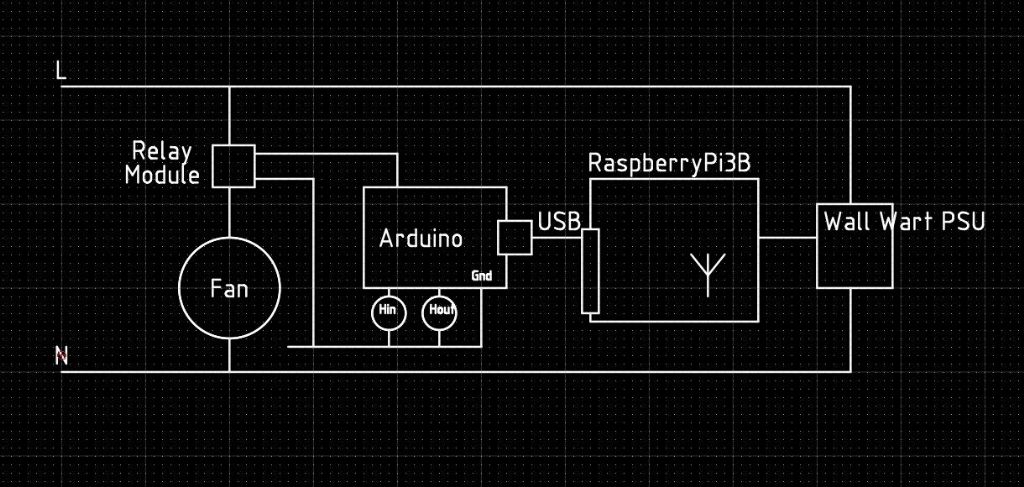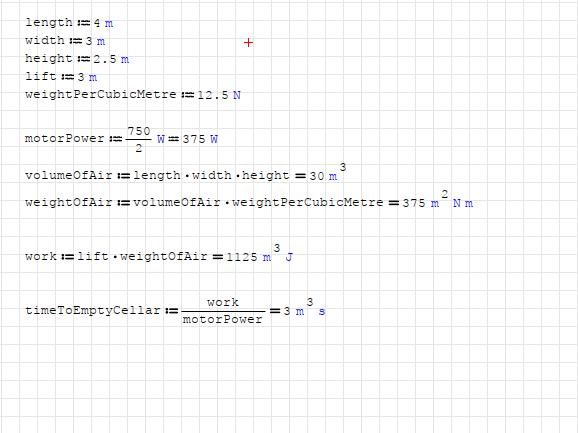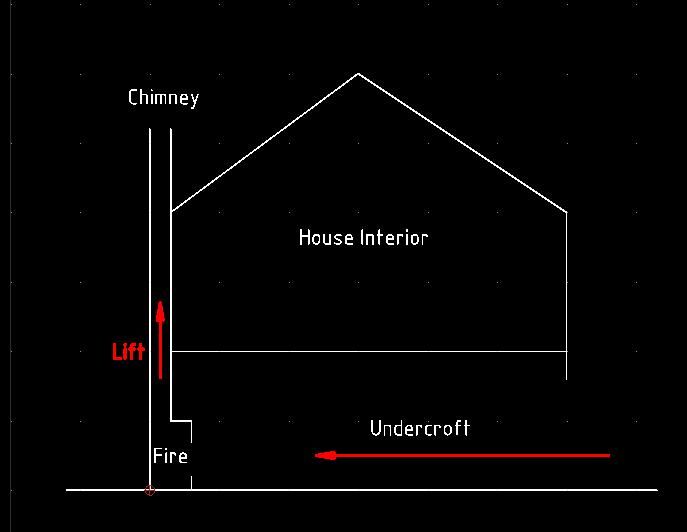Rod makes a good point about the need to measure temperature as well, but once humidity and temperature are known it's not difficult to calculate the dew point and fire up the fan appropriately.
I'd use an Arduino to control the motor and a Raspberry Pi to provide network Connectivity. The RaspberryPi series are real computers, compatible with home networks. The 3B has built-in wifi, but if this doesn't work from a cellar, they also have a physical port which could be plugged into an Ethernet over Mains adaptor. They can run headless, ie no need for a keyboard or screen.

The Arduino Fan Controller part is rather simple: read the sensors, do some sums, and switch the fan. Also simple for the Arduino report status to the RaspberryPi and make it available over wifi.
Rather harder to send commands to the Pi, and then control the Arduino. The problem isn't connectivity or computer capability, it's the need to decide exactly what control is required and how it should interact with the user. Then the design has to be implemented in software. Human Machine Interfaces are generally the most difficult and complex part of the job. Part of the problem is users are almost completely unable to specify what they want in advance. They don't understand sequences, events, error inputs, ergonomics, or the need to back out when mistakes are made. The programmer needs a specification and gets a load of vague waffle! The same users are excellent at pointing out what's wrong with what they asked for when they see the finished result! Anyway, this aspect of the design needs careful consideration, and may need a few prototype attempts. Not rocket-science but time-consuming, especially if the requirement is blurred at the outset.
Best way of getting rid of water from a damp cellar is another question. In the good old days, a sump with a drain and pump plus natural ventilation, maybe supported a fire, was the only option. Before electricity automatic pumps were worked by water pressure from the supply.
Ventilation is a way of removing moisture and I think an intelligent fan would be effective. That the fan expels water from the building is an advantage compared with an ordinary humidifier, which has to be emptied.
How much water is involved may decide the issue. If the cellar is damp enough to fill a sump, then my first step would be to empty the sump into an external drain, probably with an automatic pump. The output of an air-drying dehumidifier could drain into the sump. If the cellar isn't damp enough to fill a sump, then replacing damp air with drier air from outside is a viable strategy, and I suspect cheaper than running a dehumidifier. But because ventilation is vulnerable to damp weather, a humidifier might be required as well. And of course there's a point where the best strategy is to seal the cellar to keep water out completely – pricey.
Dave
SillyOldDuffer.







